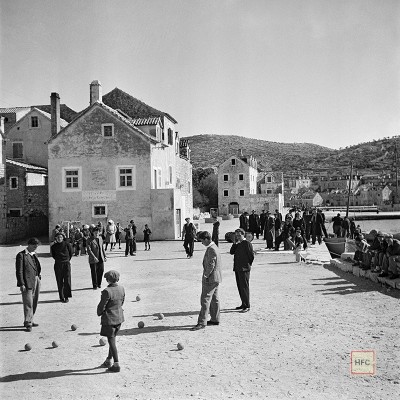No products
Prices are tax excluded
Milan Pavic
Latest Comments
-
 Charli McMullan on
My credo is that the casino
Charli McMullan on
My credo is that the casino
is a miniature version of life, teaching us about jeopardy, reward, and luck.
These posts are my reflections on the deeper lessons from the gaming
floor.
http://123.56.192.27:3000/harriettfreder
http://47.109.67.128:3000/evonneteel548
https://www.paknaukri.pk/companies/pinata-wins/
http://git.pushecommerce.com/ingeborgclunie
http://git.linkupx.com/monikamatson0/8304437/wiki/Want-To-Step-Up-Your-Vegas-Spins-Bonus-Offers%3F-You-Need-To-Read-This-First
https://www.muslimtube.com/@willkellaway77?page=about
https://japanteachjobs.com/employer/tiranga-game-777/
https://wegonetwork1.com/@lawannaschwind?page=about
https://chinasplanet.com/read-blog/1064_nine-powerful-ideas-that-will-help-you-reviews-fortune-mouse-better.html
https://axc.duckdns.org:8091/karissaz467957 -
 Philomena Fairfield on
They call me a casino [projects.om-office.de]
Philomena Fairfield on
They call me a casino [projects.om-office.de]
cartographer, mapping out the vast and exciting landscape of gaming for all to see.
I roam from Vegas to Macau, both physically and
virtually, to bring you reviews and impressions. My focus is on the atmosphere,
the game selection, and the overall player experience. I document
my findings here to help you choose your next gaming destination. Consider this your personal
guide to the world's best betting havens.
https://lystings.co.za/author/pilarobv292968/
http://118.178.129.53:8888/alysacottee639
http://begild.top:8418/leifheisler723
https://git.moguyn.cn/fosternmn77541
https://glamourrealestate.online/author/loufeez5374640/
https://avchats.com/read-blog/4980_espace-paris-sportifs-spinmillion-predictions-for-2025.html
http://git.yang800.cn/elizbethb77329
https://git.caolongle.com/ramonita56g626
https://likeminds.fun/read-blog/74028_why-you-need-a-login-usuario.html
https://www.buyamexproperty.com/author/jamisonc772983/ -
 Caryn Callaway on
I am your mole in the gaming industry, bringing you the latest trends, game releases, and casino [https://timviec24h.com.vn] news.
Caryn Callaway on
I am your mole in the gaming industry, bringing you the latest trends, game releases, and casino [https://timviec24h.com.vn] news.
Stay in front of the curve with my unrivaled reports.
https://open.bodoplay.com/terrellhamblet
https://git.esc-plus.com/maxwellgay654/5460949/wiki/Four-Locations-To-Get-Deals-On-Safe-Gambling-Site
http://121.36.52.106:3333/jamisonpeeples/2263019/wiki/Blackjack+Games+For+Revenue
https://dreamplacesai.de/elisemillard98
https://code.xiayang.space/fgylavada87358
https://hades.xyphien.com/read-blog/18503_every-little-thing-you-wished-to-learn-about-playfina-konto-anlegen-and-have-bee.html
https://repo.c-software.id/kaceyglew48757
https://git.unglab.com/armandkerr6825
https://kidstv.freearnings.com/@rosamosman8912?page=about
http://27.188.56.209:8088/stepanie07a753 -
 Rosalind Burfitt on
I'm a grinder, a player who focuses on earning a small but consistent profit over long sessions.
Rosalind Burfitt on
I'm a grinder, a player who focuses on earning a small but consistent profit over long sessions.
My blog is about the discipline, patience, and strategy required for this style of play.
I outline my methods for low-variance games and effective bankroll management.
This is not about getting rich quick; it's about the steady art
of winning.
https://shamrick.us/myrtlevkw21896/fortune-tiger-777.com3334/wiki/Onde-Encontrar-a-Melhor-para-Jogar-Fortune-Tiger
http://49.234.186.218:9000/rodgerpatnode
https://inmessage.site/@carenchick2826
https://git.daneric.dev/lashondatubbs5
http://39.105.67.143:3000/leonorwhittle
https://fullyfurnishedrentals.ca/author/erichuondekerm/
https://pakkjob.pk/companies/tedbet-casino (click for info)-japan/
https://lab.chocomart.kz/lyndaa04211185
http://giteaiposeek.cn/bretsander3457/wink-bingo-coupon-code9820/wiki/The-ultimate-Deal-On-Wink-Bingo-Instant-Registration
http://123.132.248.154:3000/rodger44f4690/rodger2012/wiki/Gest%C3%A3o-de-Banca:-A-Chave-para-Jogar-Midas-Fortune -
 Angelita on
I only cover the expanding world of online casinos and iGaming.
Angelita on
I only cover the expanding world of online casinos and iGaming.
My objective is to guide you explore the digital landscape safely and
successfully .
https://deluxerecruitment.com/us/companies/nine-casino - browse around this website,-365/
http://ev-gateway.com/claritabroomfi
https://33acres.in/author/dalenepatton07/
http://101.34.215.152:3000/chetupchurch63
https://drarchina.com/demo/@vivienbickford?page=about
http://gitlab.yaoliangxin.com/quinnwentcher4
https://git.churiland.com/soonstuder6741
https://git.openmonero.co/claudemccrae38
https://rhoming.com/agent/maudegrieve426/
https://gitlab.code-better.it/gabrielladdf71/8853788/-/issues/1
News
ANDREA ALESSI - Early Renaissance Artist
We are pleased to invite you to the presentation of the monograph ANDREA ALESSI / Ranorenesansni umjetnik - Early renaissance Artist (Andrija Mutnjaković - author of text, Luka Mjeda - author of photography)...
Exhibition / Award / Monograph PORTRET HRVATSKE...
This Exhibition shows 50 authors with one of their portraits. At the opening ceremony we presented this years Award to Walter Sirotić and presented the photo-monograph PORTRET HRVATSKE 2020 with 136...
PORTRET HRVATSKE 2020
Hrvatski fotografski centar (HFC) će početkom 2020. godine organizirati izložbu fotografskih portreta građana RH te izdati prvu monografiju PORTRET HRVATSKE 2020 kojom ćemo današnju RH predstaviti Europskoj...
Luka Mjeda - ANDREA ALESSI
Photography Exhibition of LUKA MJEDA presenting the pre-renaissance Albanian sculptor and architect ANDREA ALESSI.
 View larger
View larger
The Mediterranean brightness of Milan Pavić
Having been brought up on the experiences of a southern continental light, Milan Pavić has approached the motifs of Croatia’s coastal region with particular love and care. His visits to the Adriatic during the fifties and early sixties activated his passion for reportage, but, above all, they encouraged his search for a beauty at once chaste and intimate. The poetry (as well as function) of his recording from that time was akin to bearing witness to work and everyday life (inasmuch as it was complementary to realistic and social tendencies).Nevertheless, his most successful realisations distanced themselves from a factually based interpretation and strived instead for a lyrical sublimation and structural organisation of the frame, almost reaching the threshold of a „separated“ autonomous form.
Several Mediterranean locations, as pars pro toto, represented ancient and archaic forms of economic production along the coastline. From Cres, across the Kornati islands, Krapanj and Rogoznica, all the way to Ston and the surrounding areas of Dubrovnik, typical scenes of work by the shore were captured. These were mainly linked to extraction from the sea: to the harvesting of salt and coral, to the trapping of fish and farming of oysters.
The olive tree and little donkey, the sheep and the island panorama all take on the role of pictorial detail or caesurae, in order to lessen the epopee of industry. Yet the work sequences are also calm, or rather, they have been captured at the moment of complete balance between posture and movement. Figures and objects enter the lens of Pavić only at the point at which they have established a measured relationship with their surroundings, when the figures from the first plane compositionally synchronise with the background.
No wonder, then, that this photographer prefers the use of a square frame, while for his arrangement of elements he employs, more or less on a regular basis, accentuated diagonals running from the bottom corner of the image to the top corner. He pays special attention, however, to the treatment of surface, aiming to get the emulsion to react appropriately with the sea’s heaving surface, with the earth’s rough skin, and with the cellular clusters of figs, sponges or the mesh of fishing nets. He therefore chooses a light which stretches in relief the epidermis of the frame and pulls forth the solar energy accumulated in matter. Because, in the creations of Pavić, the salt shimmers, fish scales glitter, the whiteness of stone glares out, and the sea reflects the light from the heavens. Thus, from the majority of motifs, suffused with calm and dignity, there emanates a (almost auroral) brightness. To paraphrase the Croatian poet Tin Ujević, life by the sea’s shores offers itself to us here as a „crystal square of brightness“.
Tonko Maroević
19 other products in the same category:



























